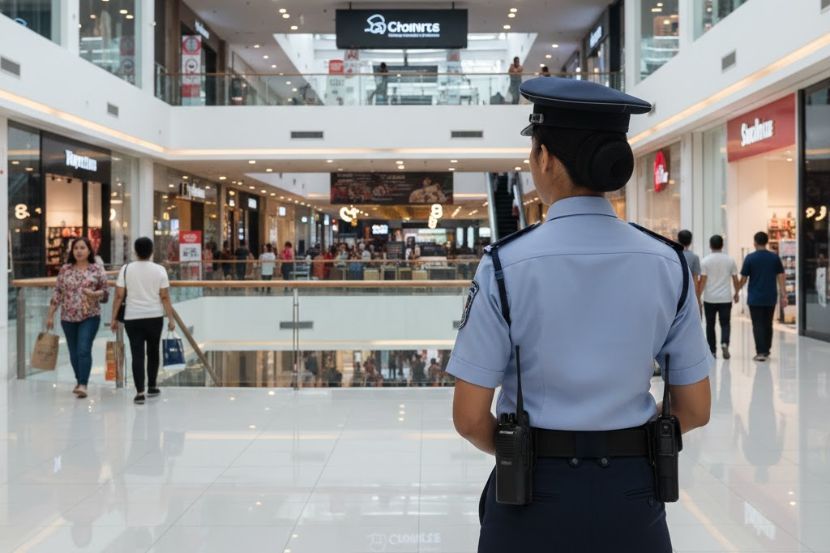The US financial meltdown has made Singaporeans a lot less rich, including 10,000 who lost RM1.2bil of their savings, leading to vocal displays of anger by ordinary investors.
It never rains, but pours; it wouldn’t have been too bad if I were just talking about the weather.
I’m referring to the growing pain that the global financial meltdown is wreaking on this small affluent state.
It has made us – the government and the people – a lot less rich, and pushed the poorer class into deeper dire straits. It has eroded national cohesiveness and widened the economic gap.
The country has been pushed back by at least a decade, possibly more. Leaders have warned that the pre-crisis living may not come back for some years.
The government, which had been sweeping general elections, is evidently worried about an upsurge in discontent that could erode its power base.
“The crisis has dealt a blow to public trust in the younger leaders’ ability to help people manage the crisis,” said an activist.
Take weekends at the Speakers Corner.
Hundreds of victims of the US financial woes have been gathering almost every Saturday to vent their anger at what they see as government failure to protect their interests.
This by itself is a national phenomenon, considering that public protests had been forbidden until a few months ago.
The protesters are among 10,000 Singaporeans who have lost S$500mil (RM1.2bil) of their life savings on “toxic” Lehman Brothers products sold here by DBS, a government-controlled bank.
When Lehman went bankrupt, these structured notes, which were extremely complicated products offering a high 5% interest, became worthless.
Many claim the local banks had portrayed them as a safe product, instead of telling them that if one of the six underwriting banks goes bust, the principal amount would be loss.
DBS has denied this, and the Monetary Authority of Singapore (MAS) is investigating specific charges. Meanwhile, a small number of old and ill-educated investors have been refunded.
The irate protesters are not your usual breed of street protesters, but hail from Singapore’s most conservative, pro-government citizenry.
Some are retirees and housewives, careful investors, who speak no English. Women have openly wept while the men, with controlled anger, lashed out at what they consider the government’s unsympathetic respon-se.
Before tempers cool, another public outcry has erupted with serious repercussions for the government, and undermined its standing in Singapore’s heartland.
Eight of the 14 PAP-managed town councils, which altogether have S$2bil in “sinking funds” reserves, have invested and lost S$16mil in the failed structured products.
The money was collected from every household and meant for use in the estate’s upkeep.
They refer only to the toxic products and do not include investments in other markets, which have declined significantly in value. There has been no town council disclosure of total losses.
Questions about the town councils’ total investments – let alone losses – are unknown. So really, how much money has been lost?
Residents are worried that the market decline will mean higher conservancy charges.
“My questions are: Why were these estate funds – with PAP members of Parliament in charge – allowed to be used to buy risky papers?” asked a web writer.
In the first place, why were they collecting so much excess funds instead of using it to develop the estates?
Criticism has been widespread because it affects more than a million people – although very marginally.
Some Singaporeans fear that more skeletons will emerge within the government machinery as the crisis deepens.
Many statutory boards, educational institutions, trade unions and armed forces may have saved up and invested billions.
Those who did are continuing to see the flow of red ink.
The conventional wisdom is that the current storm will blow over and the lost value will be restored – but that is many years away.
Amidst the “sinking funds” losses, it was announced that four Statutory Boards had incurred 14% market losses this year, none of which were Lehman’s toxic products.
They were the Civil Service College, Singapore Land Authority, Infocomm Development Authority and the Professional Engineers’ Board. However, the losses represented only 0.05% of their total investment portfolios.
The market rewards were rich during the good times, but the punishment is just as hefty when times are bad. So why does Singapore invest so mightily?
The reason lies in its small size and lack of natural resources, which has forced it to rely on two things – human skill and capital.
During the past 20 years, its investments overseas have been leaping.
Individually they’re getting bigger. Previous totals of tens – or at most a few hundred – millions of dollars, have been eclipsed by new shareholdings today which are often measured in the billions.
It is not known whether – or to what extent – the post-crisis government will review its investment policies. At the moment, Temasek and GIC appear to be adopting a more cautious approach.
Some 10 years ago – even before the current big investment push, Singapore was seen as a prime global candidate for excess saving and investment.
The Federal Reserve Bank of San Francisco wrote in 1997: “Singapore’s saving and investment rates are the highest in the world, and much of this saving and investment is mandated by the government.
“This is in sharp contrast to Western industrialised countries ... we cannot rule out the possibility that Singapore invests too much.”
As industries worldwide reduce their operations, Singapore, too, is cutting back on its ambition.
But it will likely continue to develop its external wings – by significantly investing abroad – perhaps on a much more cautious mode.





























